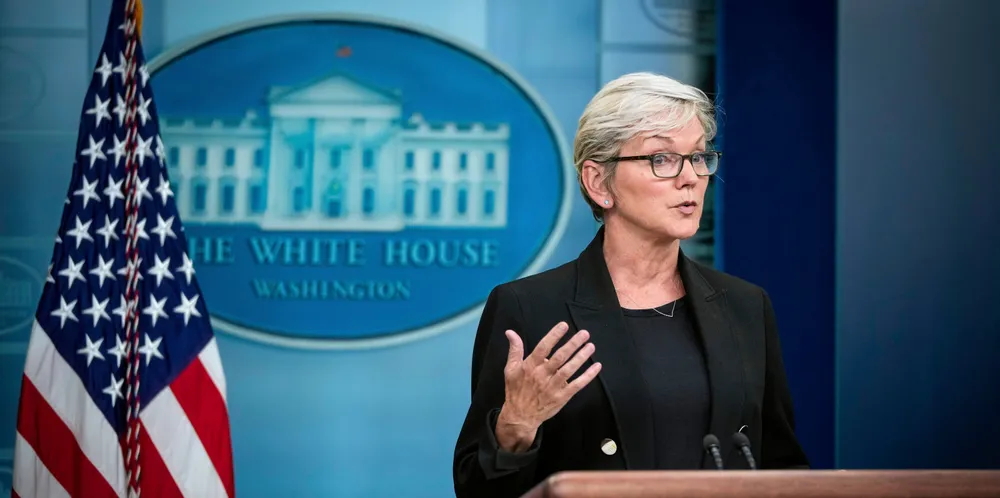'Floating wind shot' | Biden sets 15GW goal as US puts $50m behind deepwater push
Initiative aims to drive down sector costs by 75% through R&D and ramp transmission, supply chain, and port infrastructure investment

US floating wind ambitions received a huge boost with the announcement by the Biden administration of a new goal to have 15GW installed in American waters by 2035.
A newly-unveiled ‘Floating Wind Shot’ aims to hit the target by driving down costs in the sector by more than 75%, to $45/MWh through funding of R&D efforts focused on manufacturing and engineering, and by raising the scale and capabilities of wind turbines.
“Bringing floating offshore wind technology to scale will unlock new opportunities for offshore wind power off the coasts of California and Oregon, in the Gulf of Maine and beyond,” the government said in a statement. “Tapping into these resources will expand clean American energy supplies and contribute significantly to achieving climate goals set by the President and governors across the country.”
Some two-thirds of the overall US potential for offshore wind – 2.8 terrawatts (TW) – is in waters deeper than 60 metres accessible only through floating technology.
The 2035 floating goal adds to the US government's existing target to have 30GW of offshore wind turning by 2030.
In keeping with the Biden administration’s whole-of-government approach to offshore wind development, the initiative will be led by the Departments of Energy, Interior, Commerce, and Transportation, and was announced today (Thursday) by energy secretary Jennifer Granholm and interior secretary Deb Haaland.
“These bold actions will create the project pipeline necessary to spark investment in a new domestic supply chain,” said Heather Zichal, CEO of renewable energy advocacy group the American Clean Power Association.
“Paired with the recently enacted Inflation Reduction Act, these targets will dramatically reduce costs for offshore wind development, allowing deployment of clean energy at the scale needed to take action to address climate change.”
“The Golden State has already committed to developing floating offshore wind at scale… [and] now the Biden administration is giving a huge boost to these efforts by setting a national floating offshore wind goal of 15GW by 2035,” said Adam Stern, executive director, Offshore Wind California, a trade group of offshore wind developers and technology companies.
More states look to floating
While California is poised to be the first state to put floating steel in the water at scale, the deep waters off Oregon and Washington State in the Pacific, the Gulf of Maine, and further offshore in the mid-Atlantic and Gulf of Mexico, likewise have excellent wind resources that are being eyed for development.
The opportunity to generate clean power at scale is matched by the economic benefits, with a study by research consultancy Wood Mackenzie finding that one lease sale offshore California alone could support 38,100 jobs per year, $3.5bn in annual wages and $44.2bn in capital investment.
Floating wind is very much in its infancy in the US and around the world, with a total combined installed capacity of less than 124MW, compared to over 50GW for fixed bottom. And while Europe had a 30-year head start on developing the fixed bottom industry, there are no clear front-runners in the floating sector, giving the US the opportunity to take the lead.
“The future of offshore wind lies in deeper waters requiring floating technology, and this comprehensive plan sets the US on a path to become a global leader in this cutting-edge industry and a major exporter of expertise and supplies,” said Burdock.
Infrastructure investment crucial
Getting there, however, will require massive upgrades and investments into supply chains and port and transmission infrastructure, as well as workforce training.
The Floating Wind Shot includes multiple million-dollar efforts to analyse port and transmission deficiencies along the west coast to create a roadmap for needed enhancements and upgrades.
The DoE is also set to announce as part of the Floating Wind Shot initiative a further $31m in funding towards the Aerodynamic Turbines, Lighter and Afloat, with Nautical Technologies and Integrated Servo-control (Atlantis) programme.
Phase 1 of the Atlantis project focused on systems engineering for floating offshore wind systems to drive down costs, while phase 2 will be geared towards testing in ocean, lake, and tank and tunnel environments to further develop new technologies for floating wind turbines.
(Copyright)